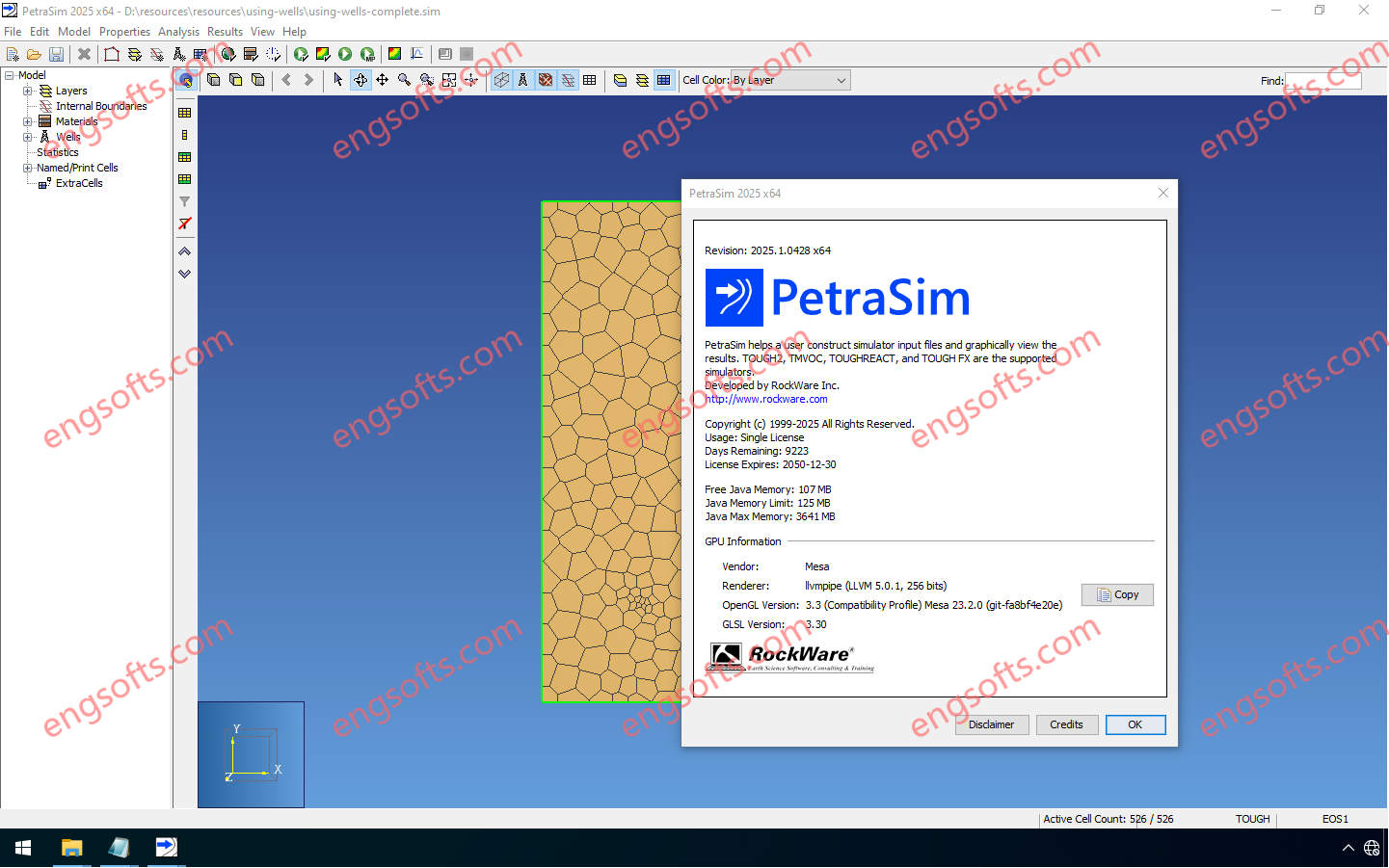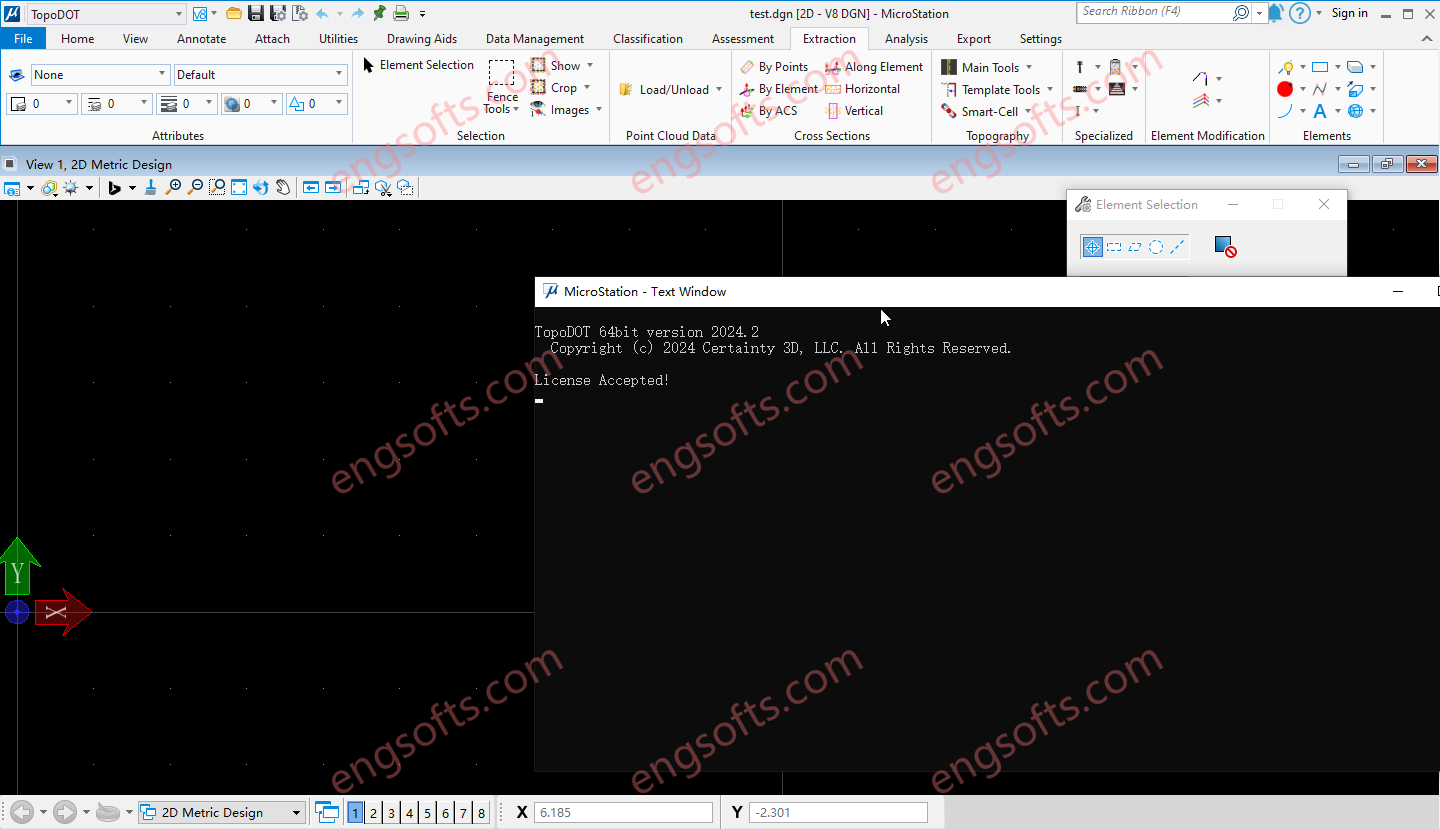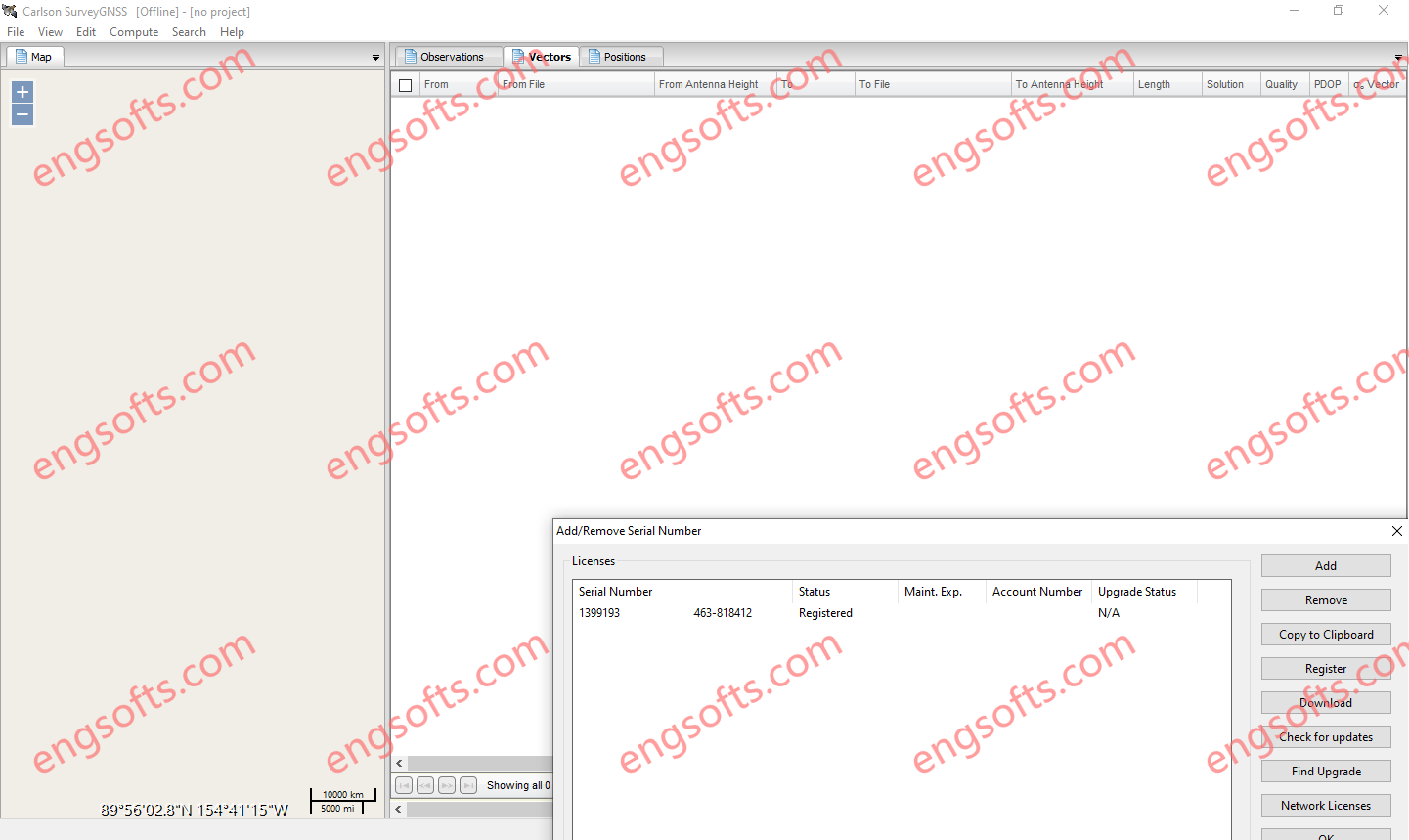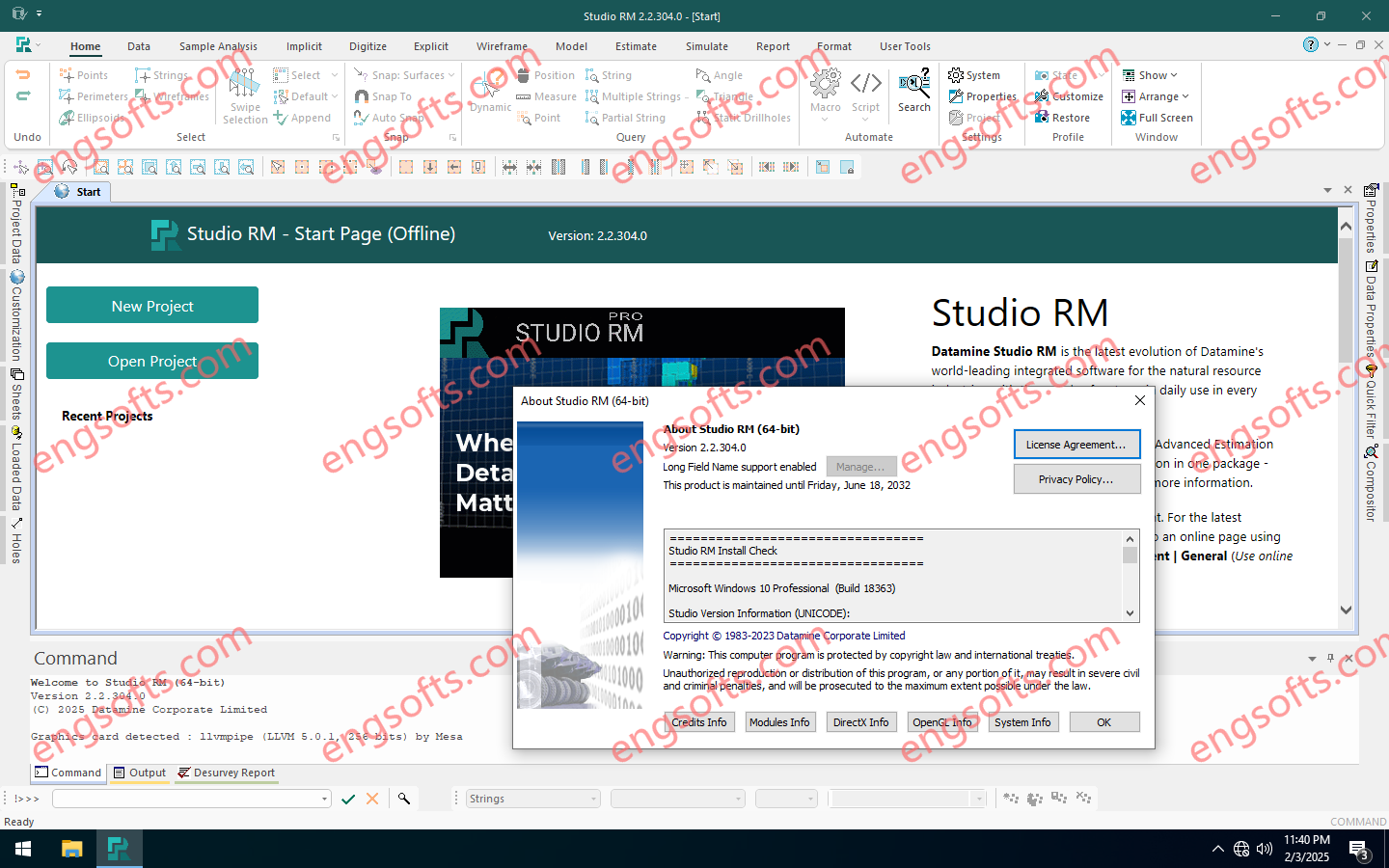
PetraSim is the graphical module for the TOUGH2 family of simulators. Developed at Lawrence Berkeley National Laboratory, TOUGH2 and its derivatives are recognized for their powerful simulation capabilities for fluid flow and heat transfer in porous and fractured media. PetraSim 2025.1 includes TOUGH2 (version 2), T2VOC, TMVOC, and TOUGHREACT (version 1.2) executables. Other Optional Executables to add: 1.TOUGH v2.1 2.TOUGHREACT v2.0 3.TOUGHREACT v3.32 But TOUGH3 and TOUGHREACT 4.13 are not included and must be purchased through Lawrence Berkeley National Lab. RockWare PetraSim 2025.1 Tested Picture The TOUGH2 codes have been applied to problems ranging from Yucca mountain groundwater flow to multi-component environmental remediation. PetraSim makes the power of TOUGH2 accessible to modelers through an interactive 3D environment that includes mesh generation,...

QuantumATK atomic-scale modeling software enables large-scale and thus more realistic material simulations, integrating multiple simulation methods, ranging from ab initio DFT to semi-empirical and classical force fields analysis, into an easy-to-use platform. QuantumATK accelerates semiconductor and materials R&D, and reduces time and costs by enabling more efficient workflows in the screening process of new materials across a broad range of high-tech industries. Available versions: 2025.x ,2024.x ,2023.x ,… Synopsys QuantumATK 2025.06 Tested Picture QuantumATK X-2025.06 are some highlights of the new features and improvements in this version across different atomic-scale modeling methods and applications for the semiconductor industry and beyond. GPU Acceleration of DFT and Semi-Empirical On average 10x+ speed-up of the most time-consuming parts of bulk and NEGF device...

TopoDOT is a comprehensive solution to manage point cloud data, assess data quality and extract topographies, models, analyses and other forms of digital twins. Geospatial data acquired along road, rail, utility and other land survey applications present unique processing challenges. The TopoDOT production process is designed to meet these challenges with the right balance between automation and quality, thereby ensuring complex project requirements are met at the lowest possible cost. Available versions: 2025.x , 2024.x , 2023.x ,… Requirement:MicroStation CONNECT Update 15+ Certainty3D TopoDOT 2024.2 For Microstation Tested Picture Road TopoDOT realizes the inherent value of point cloud data acquired along road and highway transportation corridors. Intuitive yet highly automated tools extract complex features quickly and accurately. A quality-controlled process...

Carlson SurveyGNSS post-processing software is a reliable and precise tool for all post-processing applications and is tightly integrated into the Carlson field and office workflow. Carlson SurveyGNSS 2024 v3.0.0.0 Tested Picture Carlson SurveyGNSS Release 3.0.0.0 Compute..Candidate Static Vector(s) will now calculate up to three vectors at the same time. Added Show Transcript File to the right click menu of the Compute..Candidate Static Vector(s) command. This command will open the transcript file in notepad. File…Save As…Comma-Separated Values added as a way to save positions to a .CSV file. Added a Show Transcript File menu to the right click menu on the Vectors tab. This command will open the transcript file in notepad. [Case SURVEYGNSS-57] Search…Published Precise Ephemeris/Ionosphere Model will now prioritize downloading Ionex...
Techlog can refer to a specific software platform for oil and gas wellbore analysis called Techlog, or an electronic logbook for aircraft maintenance called Tech Log. The software platform integrates and interprets wellbore data, while the electronic logbook digitizes an aircraft’s maintenance history. Highlights from 2024.5 release: Techlog AI Import & Log Prediction Tools We are pleased to announce the release of two new Techlog™ wellbore software AI tools, which leverage generative AI technology to streamline workflows by extracting insights from unstructured data and automating critical interpretation processes. These tools are designed to support customers with both on-premises and cloud infrastructure, enabling data-driven decision making through: Enhanced user efficiency. Reduced manual effort. New levels of untapped intelligence from existing data....

Synopsys Euclide IDE simplifies RTL code writing, provides real-time bug detection, and optimizes code for design and verification flows in SystemVerilog and UVM development. It offers context-specific auto-completion and content assistance tuned for Synopsys VCS simulation and ZeBu emulation, enhancing code quality throughout the project cycle. Integrated with Verdi debug capabilities, Euclide provides instant feedback, minimizing implementation bugs and improving project convergence rates. Available versions: 2025.x , 2024.x , 2023.x ,… Synopsys Euclide 2025.06 Linux Tested Picture Key Benefits Accelerated Coding Provides auto-completion, quick reference to signals, and module instantiation Fast Checking Runs on-the-fly while typing code, typically takes seconds to produce feedback Easy to Review Easy navigation of the design and testbench hierarchy, and viewing with semantic coloring

Studio RM 3.0 introduces a wide range of enhancements, including a new Datamine file format, major plotting improvements, and usability upgrades across drillhole coding, 3D visualisation, and data importing workflows. Datamine Studio RM 2024 v2.2.304 Tested Picture At the core of this release is the introduction of Datamine’s new .dmx file format, replacing the legacy .dm format that has underpinned Studio products for over three decades. The .dmx format supports up to 2048 columns and significantly smaller file sizes, enabling you to handle large and complex geological data more efficiently. The format integrates seamlessly with existing workflows, supports table tagging to embed metadata, and includes a batch conversion utility to upgrade legacy files. Studio products now generate .dmx files by...
Reconcilor 9.10 delivers a major upgrade focused on usability, data integrity, and flexibility of analysis across the mining value chain. A key new feature in this version is the Embedded Analysis, which lets you host dashboards from analytics and business intelligence tools like Power BI or Tableau within Reconcilor. This helps centralise reporting and eliminates the need to switch between platforms. The Data Approval workflow has been extended to handle approvals at both global and site levels, improving traceability and control over key datasets. Updates to the Continuum screen introduce a more adaptive layout, clearer label display, and new controls for selecting visible metrics—making it easier to work with complex comparison data. The Grade Block screen has also been enhanced,...

Datamine Studio NPVS 3.0 introduces the powerful new Datamine .dmx file format alongside significant usability, visualisation, and process enhancements to streamline your mining workflows. With this release, Datamine launches the .dmx format to replace the longstanding .dm file system, offering smaller file sizes, support for up to 2048 columns, and smooth integration with existing workflows and scripts. You can seamlessly read both .dm and .dmx files, and a bulk conversion utility is included for efficient project migration. The new format also introduces table tagging, allowing you to embed model status or spatial context metadata directly within your files. Datamine Studio NPVS 2024 v2.1.308 Tested Picture Plotting tools have undergone a comprehensive overhaul to improve usability. Each plot item now displays...

Supervisor 9.2 introduces powerful new tools to enhance visual analysis, streamline data exchange, and strengthen the software foundation, all designed to make your workflows smoother and more collaborative. One of the key highlights is the introduction of fully connected graphics. When you select data in one chart—whether it’s a histogram, scatter plot, or 3D view—the same samples are instantly highlighted across all other visualisations. This makes it much easier to spot outliers and interpret relationships in your data. To complement this, new 3D selection modes let you isolate samples by drawing rectangles, polygons, or directional cuts, with the option to combine selections using familiar keyboard shortcuts. You can also apply selections as filters directly through a right-click menu, giving you...









 ID:softmed
ID:softmed ID:956575828
ID:956575828